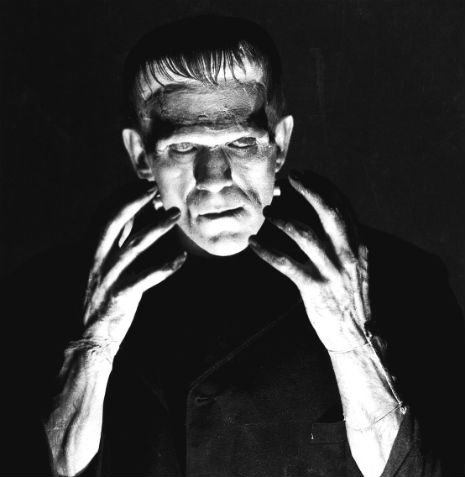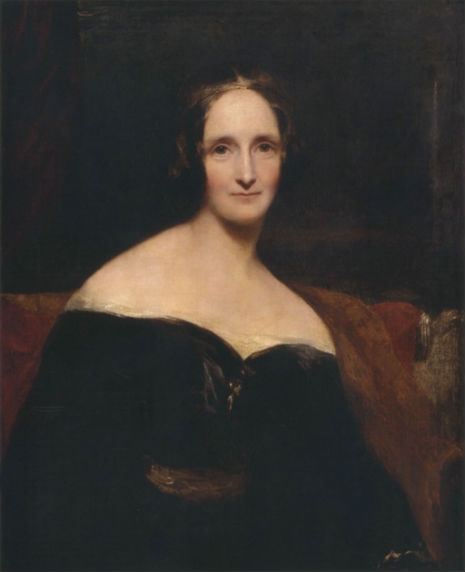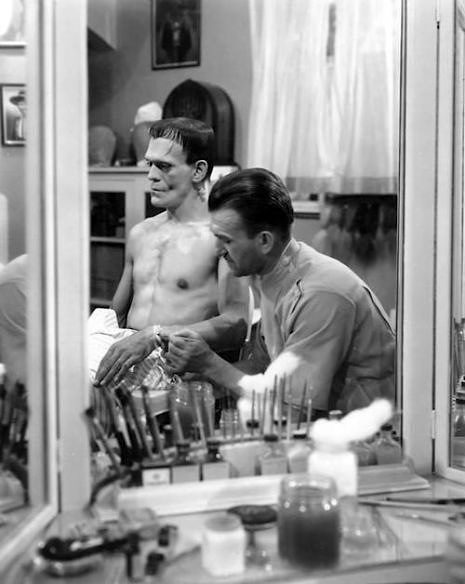
In the wee small hours of the morning, 16th June 1816, Mary Shelley had a terrifying “waking dream” that inspired the creation of her novel Frankenstein. As she described it in her journal:
When I placed my head upon the pillow I did not sleep, nor could I be said to think. My imagination, unbidden, possessed and guided me, gifting the successive images that arose in my mind with a vividness far beyond the usual bounds of reverie.
The cause of this haunting reverie had been a discussion between Mary’s lover, the poet Percy Bysshe Shelley, Lord Byron, his lover and half-sister Claire Clairmont (who was then pregnant with his child), and Byron’s doctor John Polidori. They had all traveled to spend a summer together at the Villa Diodati on the shores of Lake Geneva. Mary was the daughter of radical political philosophers Mary Wollstonecraft and William Godwin, and was the teenage lover of firebrand poet Shelley—with whom she had eloped to Switzerland to visit his friend and fellow poet, Lord Byron.
It was the year without summer, when the skies were grey with the volcanic ash that had erupted from Mount Tambora the previous year in the Dutch East Indies—it was the largest eruption in 1,300 years, and led to floods, food shortages, and cold, inclement weather across the world. A suitably ominous year for the birth of literature’s monstrous creation—Doctor Victor Frankenstein’s creature—the “Adam of [his] labors.”
Unable to spend time outside, the menage sat late into the evening reading ghost stories to each other. These were taken from Fantasmagoriana, an anthology of German and French horror tales. Then one evening by the flickering log fire, Byron suggested that each member of the group should produce their own tale of horror. This they did, mainly Gothic tales of ghosts and the undead. However, Doctor Polidori surprised the company with The Vampyre, which was eventually published in 1819, and is said to be the first of the vampire genre. But it was Mary Shelley—or Godwin as she was then—who had the greatest and most enduring literary success.

Having struggled to come up with an original tale, Mary was inspired one evening by a discussion on “Galvanism,” the scientific phenomenon discovered by Luigi Galvani, whereby muscles (originally on frogs legs, later corpses) twitched and moved, and seem to come alive, when jolted with an electric current.
As author Derek Marlowe described it in his book A Single Summer With L.B.:
The earlier talk of reanimation and the rekindling of dead matter spun in her mind until without realizing it, she herself experienced in her sleep a grotesque nightmare that was so vivid that she felt it was happening within her very room. She saw a manufactured corpse stretched on the floor, a thin figure kneeling beside it, and then she witnessed the corpse stirring, moving, coming to life.
He sleeps; but he is awakened; he opens his eyes: behold the horrid thing stands at his bedside, opening his curtains and looking on him with yellow, watery but speculative eyes.
Starting up in terror, she was no more comforted when she saw the familiar room, the closed shutters, the dark parquet flooring, the patterned walls, for the vision haunted her still. In vain throughout the night Mary attempted to banish the images from her mind, but they returned constantly, until dawn she realized at last that there was only one thing she could do.
I have found it! What terrified me will terrify others; and I need only describe the spectre which had haunted my midnight pillow.

The shy, eighteen-year-old Mary started writing her story that very day and developed it into a novel during 1817:
It was on a dreary night in November that I beheld the accomplishment of my toils. With an anxiety that almost mounted to agony, I collected the instruments of life around me, that I might infuse a spark of being into the lifeless thing that lay at my feet. It was already one in the morning; the rain pattered dismally against the panes, and my candle was nearly burnt out, when, by the glimmer of the half-extinguished light I saw the dull yellow eyes of the creature open; it breathed hard, and a conclusive motion agitated its limbs.
Mary Shelley’s Frankenstein; or, The Modern Prometheus was first published anonymously in an edition of 500 copies of three volumes in January 1818. It proved an immediate success, with a second edition published in 1822. The following year a stage production based on the novel, Presumption; or The Fate of Frankenstein was first produced, which greatly popularized the story, as Mary’s father William Godwin excitedly wrote in this letter:
My dear Mary
I write these few lines, merely to tell you that Frankenstein was acted last night for the first time, & with success. I have therefore ordered 500 copies of the novel to be printed with all dispatch, the whole profits of which, without a penny deduction, shall be your own.
I am most impatient & anxious to see you, and am ever most affectionately yours
W Godwin
195, Strand,
July 29, 1823.

A revised, more conservative version of Frankenstein was eventually published under Mary’s own name in 1831.
The first movie version of Frankenstein was made in 1910 by Edison Studios. Filmed over three days, the creature was a snaggle-toothed monster with Russell Brand hair. It proved successful, but not as successful as James Whale’s classic film version starring Boris Karloff as the monster in 1931.
From one dream were these wonders so created.
Thomas Edison’s 1910 version:







